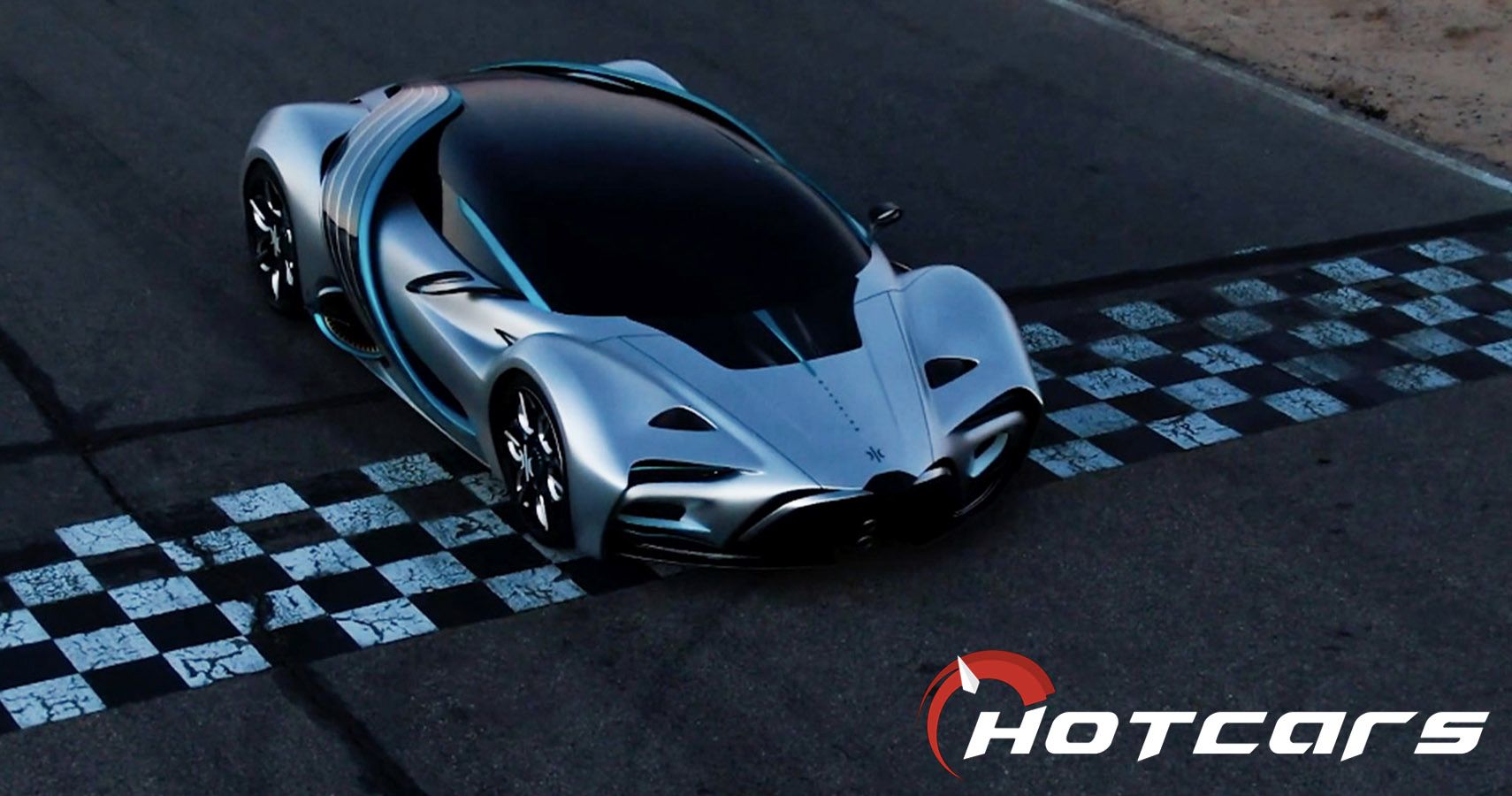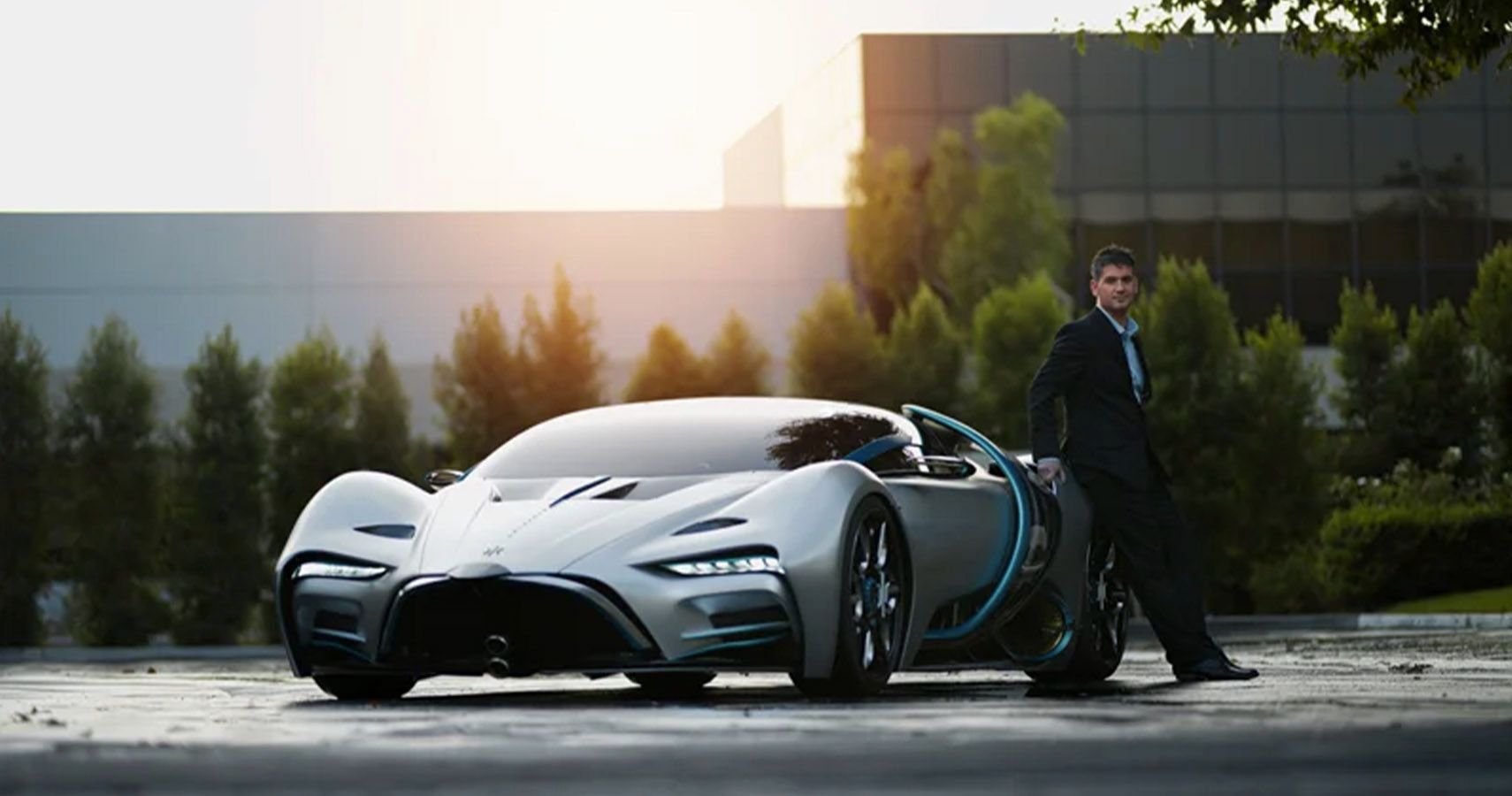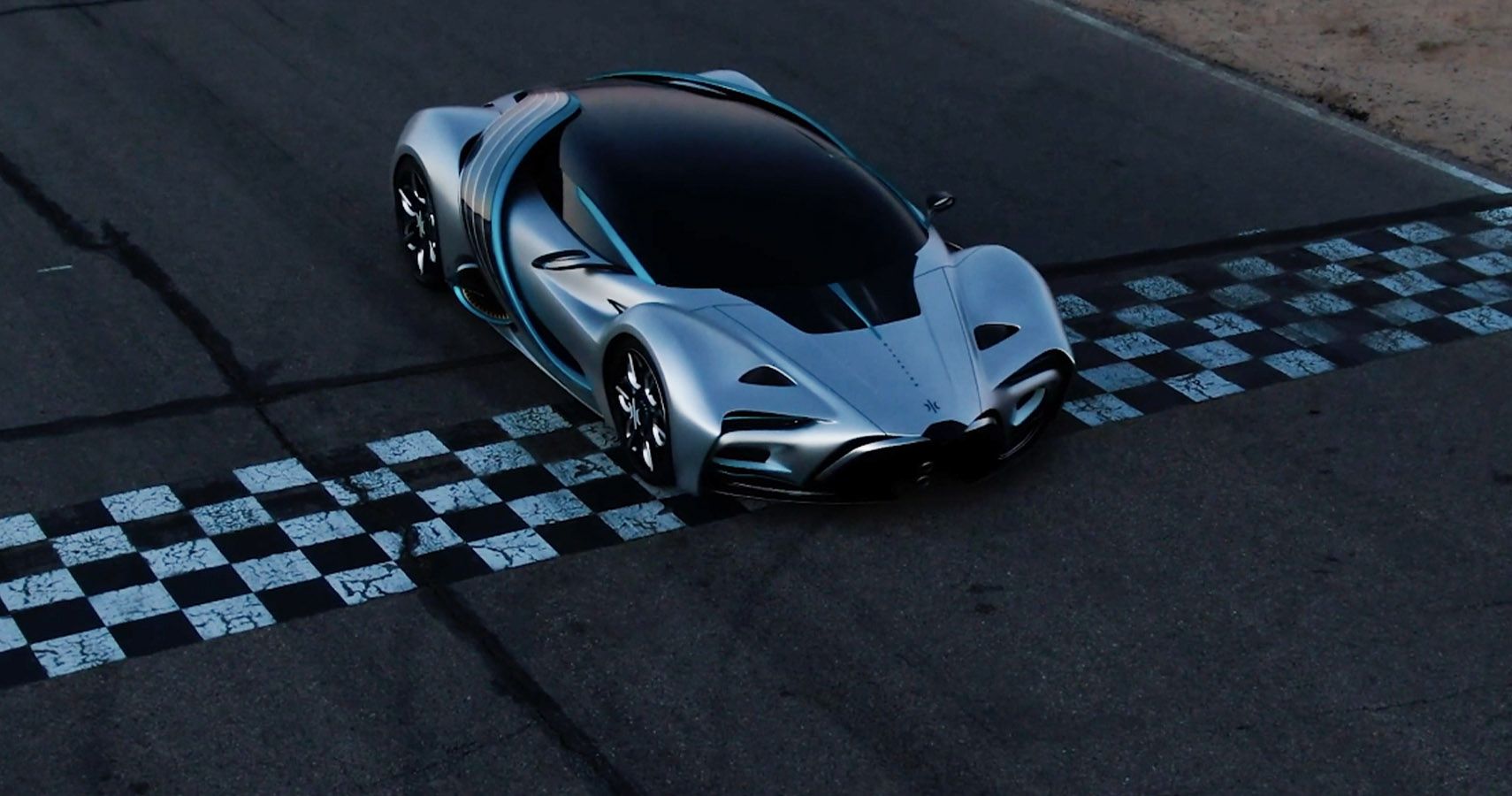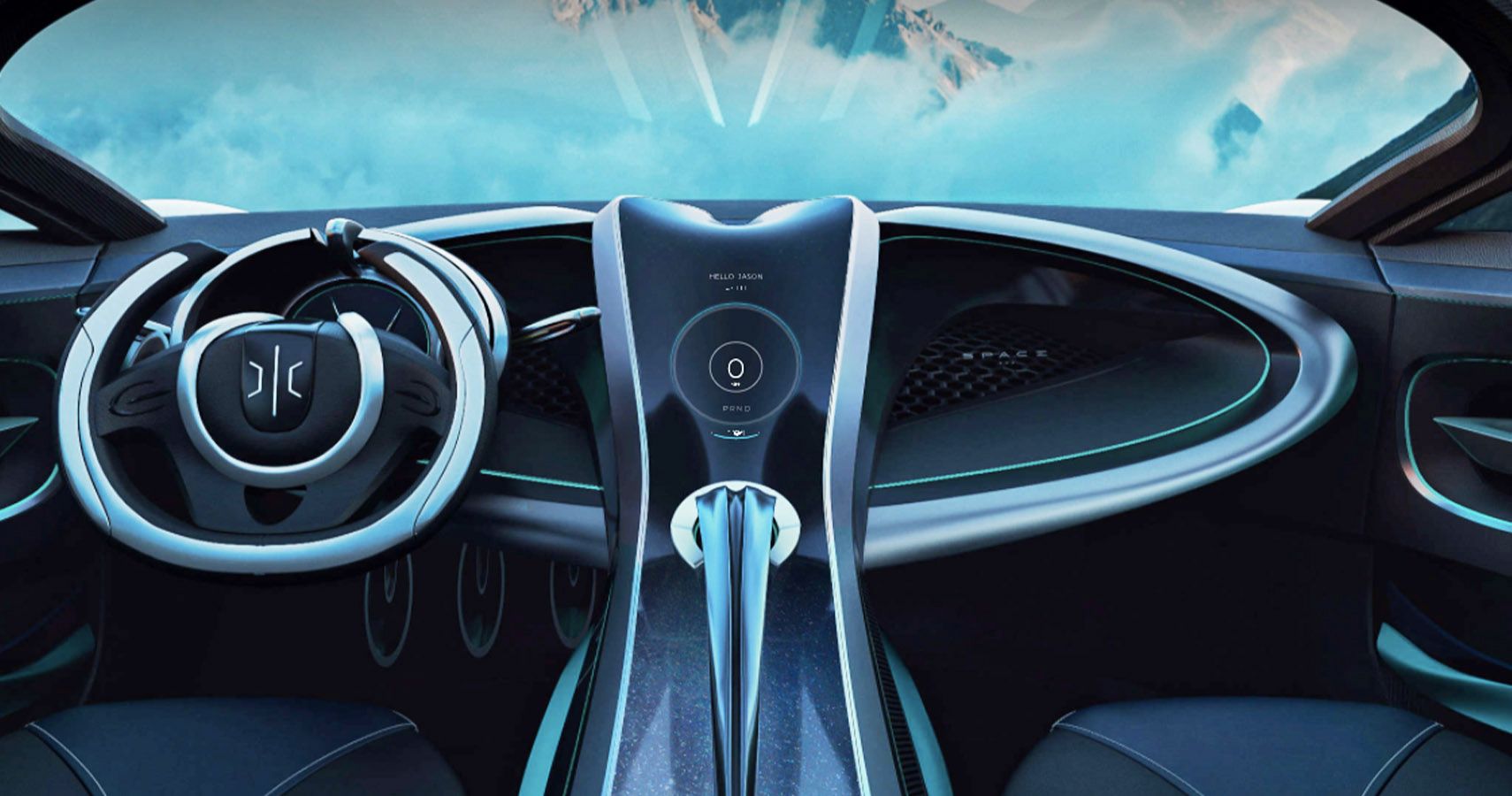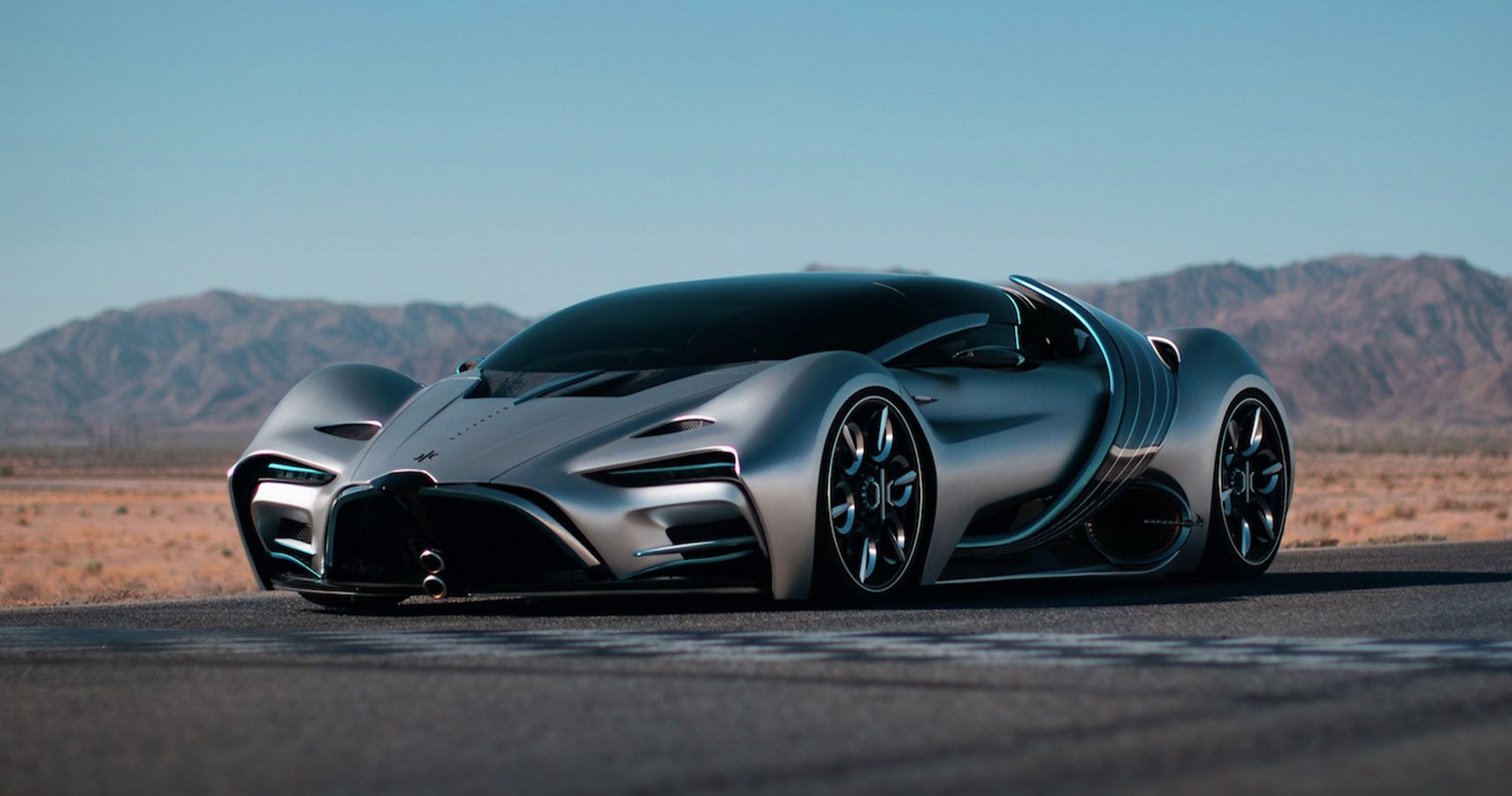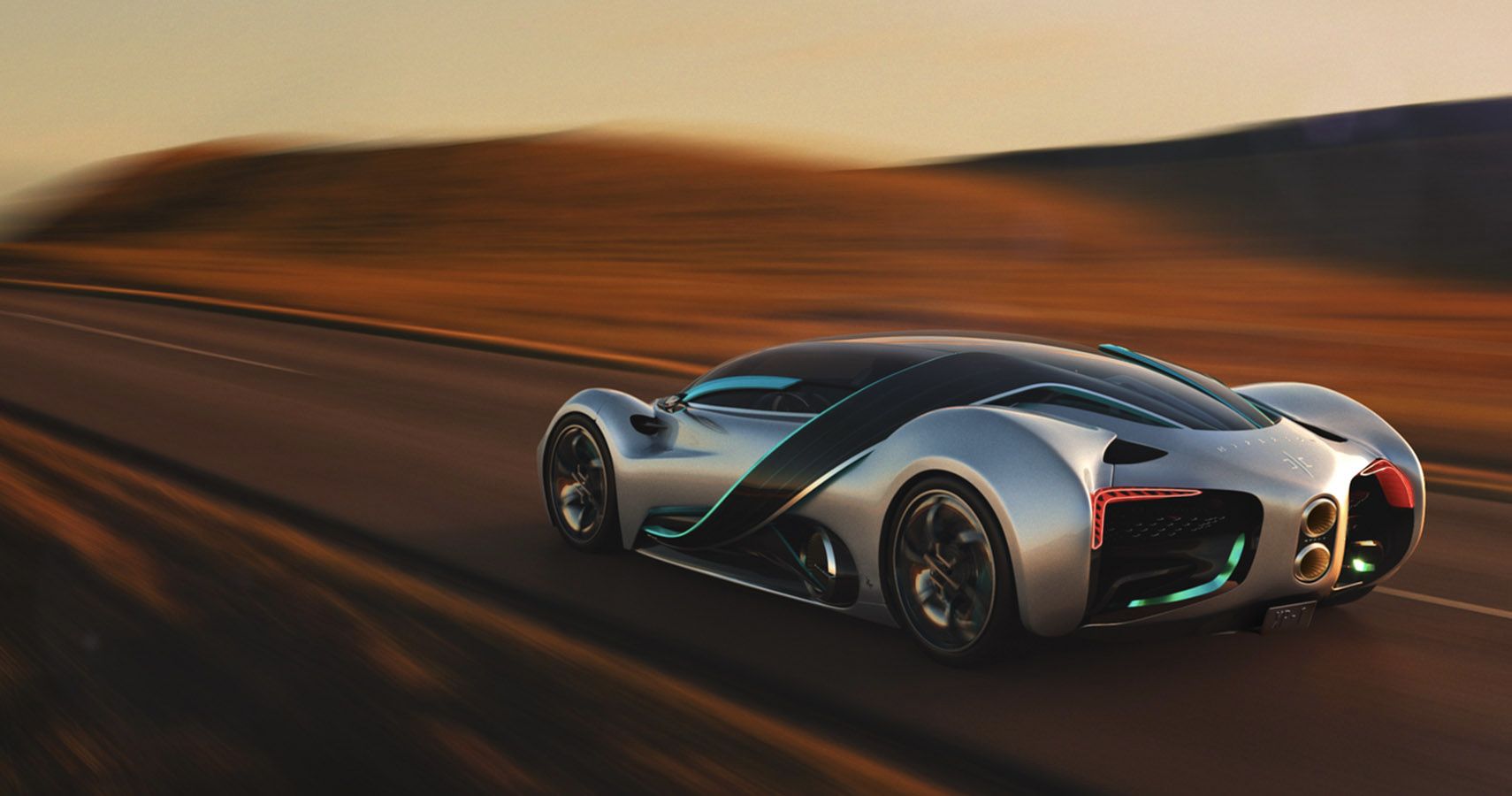In the past, technological advancements pioneered in motorsports propelled the automotive industry into the future. More recently, as governing racing bodies place limits on the power allowed in competition, the burgeoning industry of supercars and hypercars serves as the test-bed for the automotive industry’s highest-concept design and engineering.
Only a year has passed since Bugatti broke the 300-mile-per-hour barrier with the Chiron. But that year has been packed with big news in the hypercar industry, including a controversial top-speed run by the SSC Tuatara and the news that Volkswagen AG might sell both Lamborghini and Bugatti to upstart Croatian EV and battery manufacturer Rimac.
The fact that a startup could potentially draw billions of investment dollars reflects the blurred lines between Silicon Valley tech-style business and traditional automotive manufacturing. But as aggressive as Rimac might sound with its electric C_Two hypercar on the horizon, this summer, another tech company called Hyperion took things a whole new step into the future by unveiling the XP-1 hypercar. And the single big headline surrounding the XP-1 is that it’s powered by hydrogen.
I recently spoke with Hyperion CEO Angelo Kafantaris about the XP-1 hypercar, which he hopes will revolutionize not just the automotive industry but the entire world. That’s because Hyperion isn’t even really a car company—and the XP-1 is really just a marketing exercise (that happens to boast a 1,000-mile range and some of the most advanced space-age technology ever used in an automobile).
Throughout our conversation, Kafantaris made eminently clear to me that the tech underpinning the XP-1 itself goes far beyond the future of mobility, as he revealed Hyperion’s wide-ranging plans to spark a revolution in worldwide energy use, delivery, and storage.
How Hydrogen Powers A Hypercar
Understanding all the space-age technology that makes the XP-1 a huge leap for the world of hypercars helps to shed light on Hyperion’s goal of revolutionizing the entire energy industry. And to be fair, the XP-1’s spec sheet sounds borderline ludicrous, including a 1,016-mile range, a 221-mile-per-hour top speed, a 0-60 time around two seconds, and a curb weight under 2,275 pounds.
The heart of the project is, without a doubt, the hydrogen technology. But it’s critical to note that hydrogen-powered cars are actually electric cars—the difference being that instead of heavy batteries, they store their power in the form of hydrogen. For the XP-1, Hyperion employs three carbon-fiber tanks behind the passenger compartment connected to a fuel cell beneath the seats that bonds the hydrogen with oxygen to produce an electron (with water vapor as the only emission). The electricity then heads to ultracapacitors on the way to multiple motors front and rear for enhanced traction and all-wheel drive, in standard electric-car form.
Hyperion designed the XP-1 purposefully to stand out from the crowd, which helps explain the massive solar panel wings on each side. Their purpose goes beyond style points, though, being constructed out of multi-junction solar cells more typically found on NASA satellites and able to both follow the sun (maximizing energy production) and, more importantly, contribute to the vehicle’s active aerodynamics by manipulating downforce, up-force, and even side-force.
A Plan For The Hydrogen-Powered Future
Solar panels, hydrogen storage, NASA, ultracapacitors—everything comes together for Hyperion within a unified vision for their energy revolution. But where most companies have focused on solar and wind farms to increase sustainable energy production, Hyperion looked in a different direction.
“When we create solar farms and wind farms,” Kafantaris explained, “Even when we use nuclear that’s been curtailed in off-peak, we have more energy than we can store because it’s overbuilt on purpose.”
“The equivalent of atomic bombs worth of energy, which is about 70 megawatts, is being unused on a daily basis by most solar farms. How do you capture that lost energy? You can’t do it with batteries but you can do it with hydrogen.”
Hydrogen storage might sound risky to plenty of people who remember the Hindenburg tragedy and the Challenger Space Shuttle explosion. But the industry has come a long way since then—and there’s a reason every single NASA space flight has employed hydrogen. See, instead of a heavy battery, hydrogen cars have a tank full of what is, scientifically speaking, the lightest element on the periodic table. And Kafantaris famously claims that Hyperion’s carbon-fiber storage tanks can be dropped off a building or shot with a high-powered rifle without rupturing or exploding.
Educating The General Public About Hydrogen
“The biggest challenge with hydrogen is education,” Kafantaris admitted. “People don’t know how safe hydrogen is. That it’s safer than gasoline because it’s non-caustic and it doesn’t cause cancer. They don’t know that these things don’t explode when they’re left in a parking garage because they don't overheat, unlike battery-electric cars.”
Educating the general public sits front and center among Hyperion's wide-ranging goals, which explains why the XP-1 needed to be a stand-out from the get-go, rendering all other hypercars obsolete. It’s a rolling advertisement for hydrogen—living, driving proof of hydrogen’s potential to optimize everything from home energy consumption to long-haul trucking, ride-sharing, and even the aerospace industry. Critically, hydrogen stations and hydrogen vehicles will allow for quick recharging of their lightweight fuel, as opposed to battery-electrics that take a long time to power up and weigh actual tons.
But first, before we can fill up our hypercars or take to the skies in flight, we need to actually be able to get hydrogen reliably, as proven by recent struggles in California that forced Toyota to send checks to Mirai owners who couldn’t fill up their cars conveniently. And it’s this challenge that has truly been Hyperion’s main focus since 2011—the XP-1 came about somewhat secondarily.
A Big Unveil In 2021
“The next step for us is to show this really exciting station that we’ve been working so hard on,” said Kafantaris. “This station has been in development for a long time. The car is exciting, of course, but the station is where it’s at. There’s nothing about the station that’s theoretical.”
Hyperion plans to unveil its hydrogen station in early 2021, hopefully by the end of January, in a hands-on event featuring the XP-1. Perhaps as a sign of how fast technology can change, in the time between now and then, even the XP-1 itself will have evolved.
The current XP-1 is, Kafantaris assured me, a real-life, rolling car powered by hydrogen. And yes, it proved itself capable of a 1,016-mile range in real-life testing. But that XP-1 was not the final production version—at least, not yet. The current test mule actually features some steel in the chassis that will be replaced by carbon fiber and titanium for the production vehicle. The next iteration with the lighter tub should begin testing sometime in the next 35 days.
In fact, Kafantaris revealed, there will eventually be two different XP-1 variants, one that will store hydrogen in gas form, much like a “conventional” fuel-cell car, and another that will employ what Kafantaris cloyingly called an as-yet-secret "Space Technology Package, with much higher volumetric and gravimetric energy density."
Hyperion hopes to begin deliveries of the XP-1 in early 2022. But this tech company isn’t stopping with a hypercar built to tell the hydrogen story.
More To Come From Hyperion
“We’re going to be releasing a series of vehicles over the next year,” Kafantaris revealed. “Sedans and other forms of vehicles that people can actually drive, using the same technology that trickles down from our most expensive offering, the XP-1 halo vehicle.”
Of course, how long it will take to revolutionize an automotive industry that's already in the midst of an electric revolution remains a serious question, though not one that Hyperion's investors sound particularly worried about. Kafantaris is an optimistic, energetic guy but even he could admit that, "The hardest question to answer when it comes to new technology is making a commitment to when the industry will reach critical mass. As much as I want it to be a year or two years from today, deep down I know it’s going to be an uphill battle. It’s going to take a lot of time and it’s going to be winning the hearts and minds of a lot of people.”
Winning those hearts and minds sits at the top of Kafantaris and Hyperion's to-do list. Only by forcing a sea-change in perception can the company's further plans come to fruition—plans that include a range of affordable hydrogen-powered passenger cars for the masses to go along with the nationwide network of hydrogen filling stations, commercial aircraft, and further NASA collaborations.
As he's rattling off the benefits of hydrogen across a startling range of industries, Kafantaris simultaneously comes across as a quintessential startup guru with grandiose plans to solve all of the world’s problems—but also as a huge automotive fan at heart. He's even optimistic that hydrogen power could revolutionize motorsport.
"One of the most exciting parts to a car guy like me is that you can’t really have a 24-hour car race with a battery car," he said. "You might be able to, but you’re going to destroy like 17 batteries along the way. But you can have a 24-hour race with a hydrogen car.”
Adding hydrogen-powered racecars to Hyperion’s education program sounds like a great way to accelerate a shift in perception surrounding the technology. Hypercars can only go so far, it turns out, and the hydrogen-powered XP-1 represents only one small step in Hyperion's growth-focused story arc—which also includes, by the way, a quick IPO that Kafantaris hopes could happen as soon as the second quarter of 2021.
Sources: hyperion.inc, insideevs.com, and thedetroitbureau.com.

